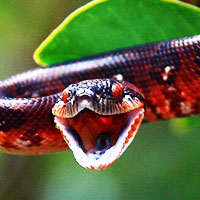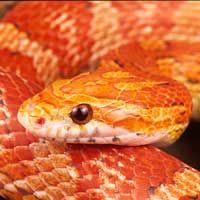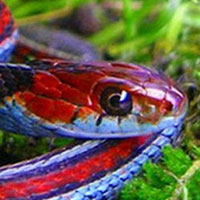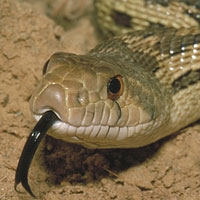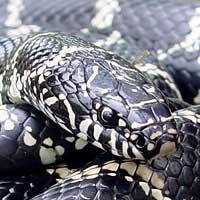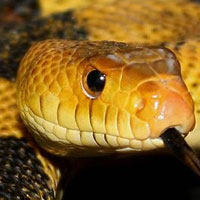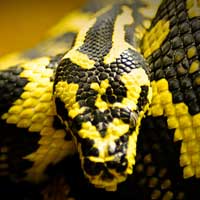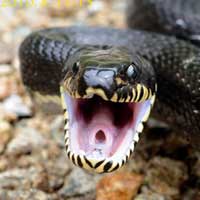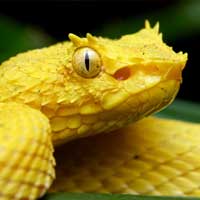The Ultimate Guide to Understanding the Children's Python
The scientific name of the Children's Python is Antaresia childreni, and it belongs to the Pythonidae family, which includes non-venomous constricting snakes commonly referred to as pythons.
Scientific Name: Antaresia childreni
Snake Family: Pythonidae
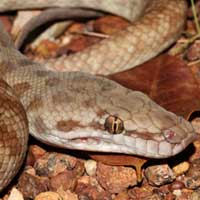
Introduction to the Children's Python
The Children's Python (Antaresia childreni) is a small, non-venomous snake native to Australia, named after naturalist John George Children. Known for its manageable size and calm temperament, this species is ideal for beginner snake keepers. Its ability to thrive in captivity and its striking pattern make it a popular choice among reptile enthusiasts. This guide explores every detail about the Children's Python, from its habitat and diet to its care requirements.
Discovering the Natural Habitat of the Children's Python
The Children's Python is native to the northern regions of Australia, where it inhabits a range of environments. Its adaptability allows it to thrive in various habitats, from arid regions to tropical areas.
- Geographic Range: Found across Queensland, Northern Territory, and Western Australia.
- Preferred Habitat: Rocky outcrops, woodlands, and caves.
- Climate: Warm and humid conditions with temperature fluctuations between day and night.
| Region | Habitat Type | Key Features |
|---|---|---|
| Queensland | Rocky Outcrops | Ample hiding spots, stable temperatures |
| Northern Territory | Woodlands | Scattered vegetation, moderate humidity |
| Western Australia | Caves | Cooler temperatures, secure shelter |
Diet and Feeding Needs of the Children's Python
The Children's Python is a carnivorous species, feeding on small prey in its natural environment. Its diet in captivity can be easily managed with appropriate planning.
- Natural Diet: Small mammals, reptiles, and occasionally amphibians.
- Feeding Frequency:
- Juveniles: Every 5-7 days for proper growth.
- Adults: Every 10-14 days depending on their size and activity level.
- Captive Feeding Tips:
- Offer thawed, pre-killed mice or rats to ensure safety.
- Feed in a separate enclosure to reduce substrate ingestion.
- Monitor feeding habits to prevent obesity.
Understanding the Behavior and Temperament of the Children's Python
Children's Pythons are known for their calm and curious nature. They are generally easy to handle and adapt well to human interaction when cared for properly.
- Activity Patterns: Primarily nocturnal, becoming active during the evening and night.
- Defensive Behavior: Rarely aggressive, but may hiss or coil if threatened.
- Interaction with Humans: Tolerates handling well when introduced gradually and gently.
With regular handling and a stress-free environment, these snakes make excellent pets for reptile enthusiasts of all experience levels.
Health and Lifespan of the Children's Python
With proper care, the Children's Python can live 20-30 years in captivity. Regular monitoring of its health and environment is essential to its longevity.
- Common Health Issues:
- Respiratory infections caused by improper humidity or temperature.
- Shedding problems due to low humidity levels.
- Obesity from overfeeding or lack of exercise.
- Preventive Care:
- Maintain humidity levels between 50-60%.
- Provide a temperature gradient with a basking spot of 88°F-92°F.
- Ensure a clean and spacious enclosure with regular check-ups.
Reproduction and Breeding of the Children's Python
The Children's Python is oviparous, laying clutches of eggs during the breeding season. Successful reproduction in captivity requires careful attention to environmental conditions.
- Mating Season: Late winter to early spring.
- Clutch Size: 6-18 eggs per clutch.
- Incubation Period: 50-60 days at 86°F-88°F.
- Breeding Tips:
- Simulate seasonal changes to encourage breeding behavior.
- Provide a nesting box with suitable substrate for egg-laying.
- Monitor incubation conditions to ensure healthy hatchlings.
Handling and Caring for a Children's Python
Caring for a Children's Python is straightforward, making it an excellent pet for both beginners and experienced keepers. Consistency and attention to detail are key to their wellbeing.
- Enclosure Requirements:
- Minimum size: 3’ x 2’ x 2’ for adults.
- Provide multiple hiding spots and a water dish for soaking.
- Maintain a secure enclosure with proper ventilation.
- Handling Tips:
- Handle gently and support the snake’s entire body.
- Avoid handling during shedding or immediately after feeding.
- Wash hands before and after handling to prevent contamination.
With proper care, the Children's Python can thrive in captivity and provide years of enjoyment for its keeper.
Other Snakes In This Species
 Amethystine Python
Amethystine Python Ball Python
Ball Python Black-Headed Python
Black-Headed Python Boelens Python
Boelens Python Borneo Blood Python
Borneo Blood Python Burmese Python
Burmese Python Burrowing Python
Burrowing Python Centralian Python
Centralian Python Childrens Python
Childrens Python Coastal Carpet Python
Coastal Carpet Python Diamond Python
Diamond Python Green Tree Python
Green Tree Python Indian Python
Indian Python Inland Carpet Python
Inland Carpet Python Jungle Carpet Python
Jungle Carpet Python Macklots Python
Macklots Python Malaysian Blood Python
Malaysian Blood Python Olive Python
Olive Python Pygmy Python
Pygmy Python Reticulated Python
Reticulated Python Ringed Python
Ringed Python Rock Python
Rock Python Rough Scaled Python
Rough Scaled Python Spotted Python
Spotted Python Sumatran Blood Python
Sumatran Blood Python Timor Python
Timor Python White Lipped Python
White Lipped Python
